Abstract
Patient decision support systems have a promising role in the delivery of health care. However, the best approach for further development of these systems is a matter of speculation. To help chart a course for further development of decision support systems, we consider the four traditional roles that patients play in the medical decision making process, the limitations that patients face in participating in each role and describe how contemporary systems address can facilitate successful decision making for each role. Because patients have a diversity of preferences for the role they play in decision making, we believe that the critical research question is how to make decision support systems robust enough to support a patient's desired role, whatever that role might be. By directing research in decision support systems in this fashion, we believe that they will achieve a larger patient audience and have increased value in the delivery of clinical care.
Full text
PDF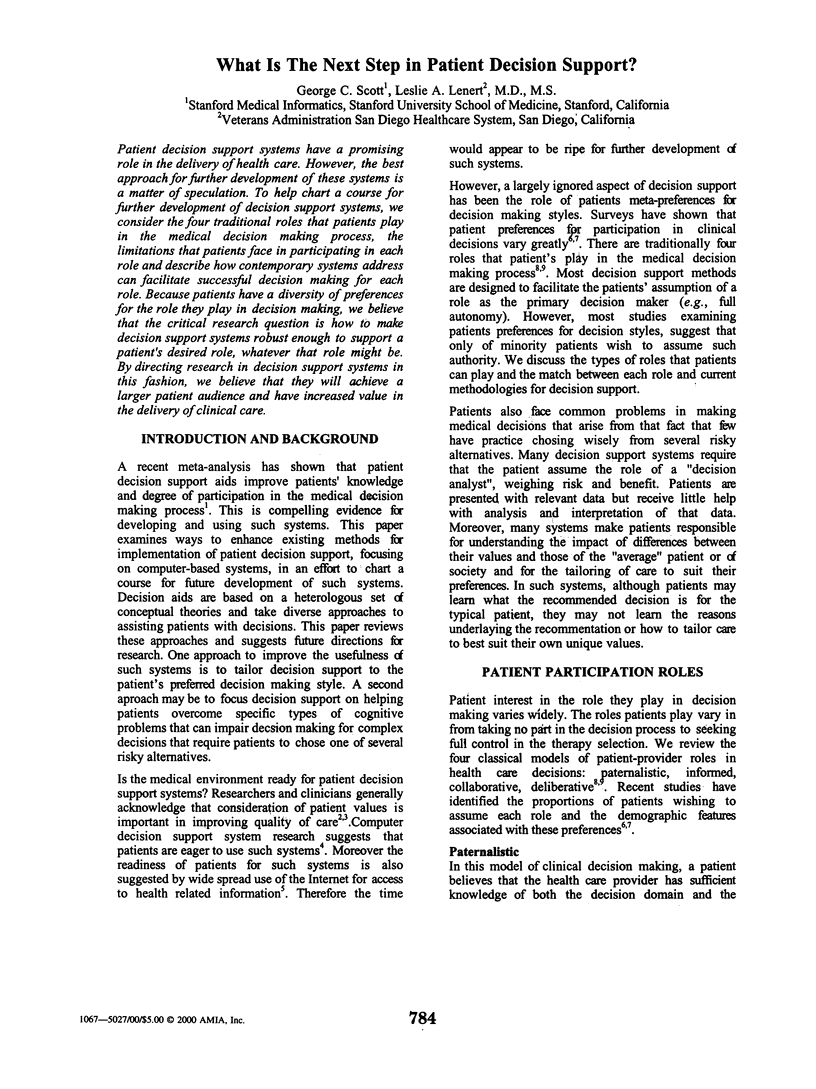
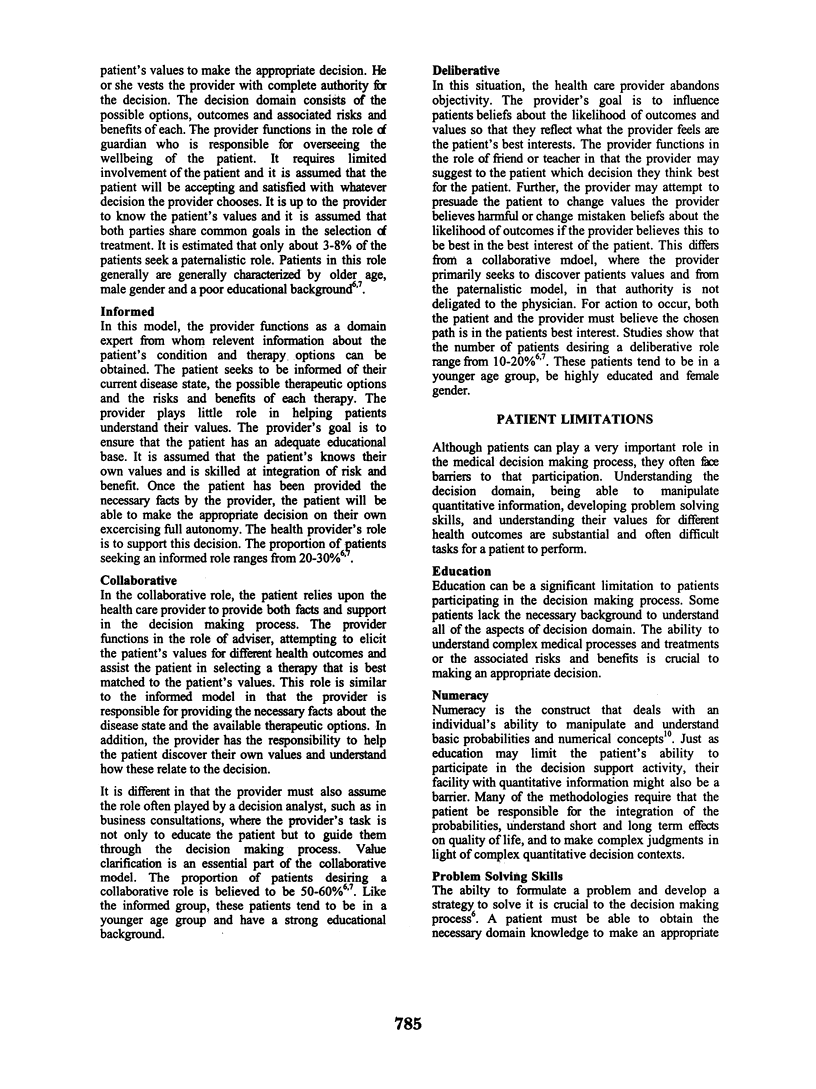
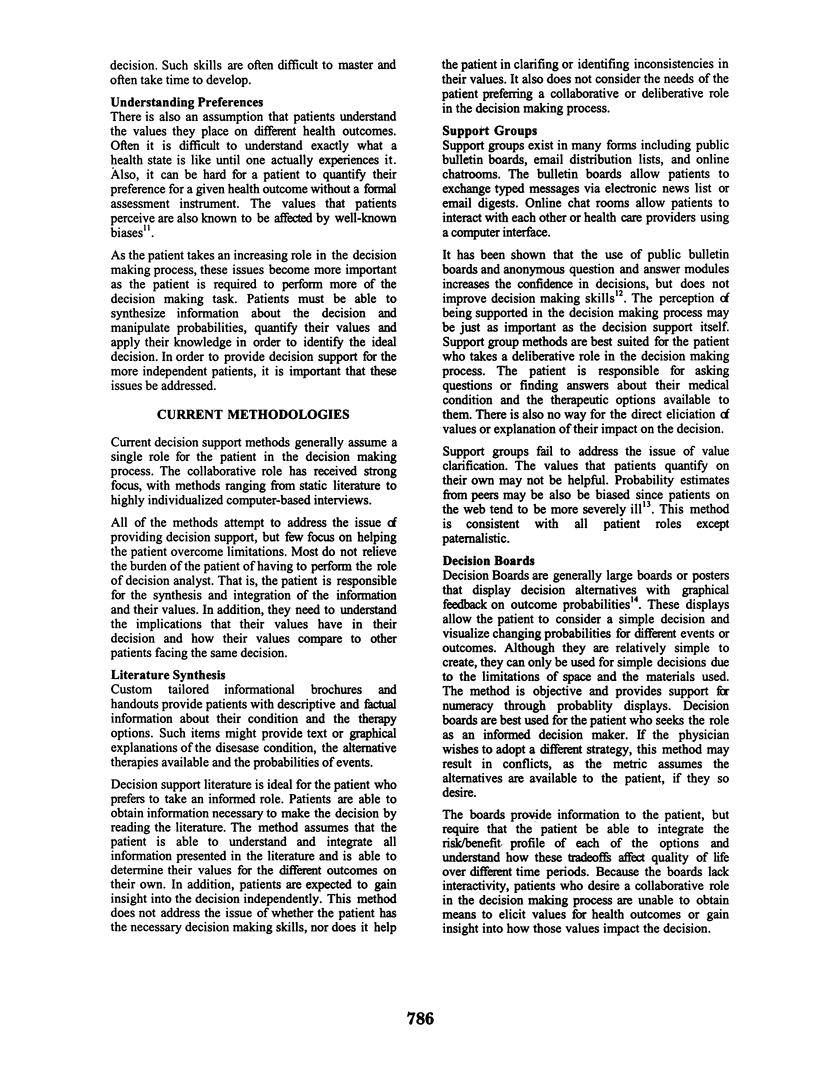
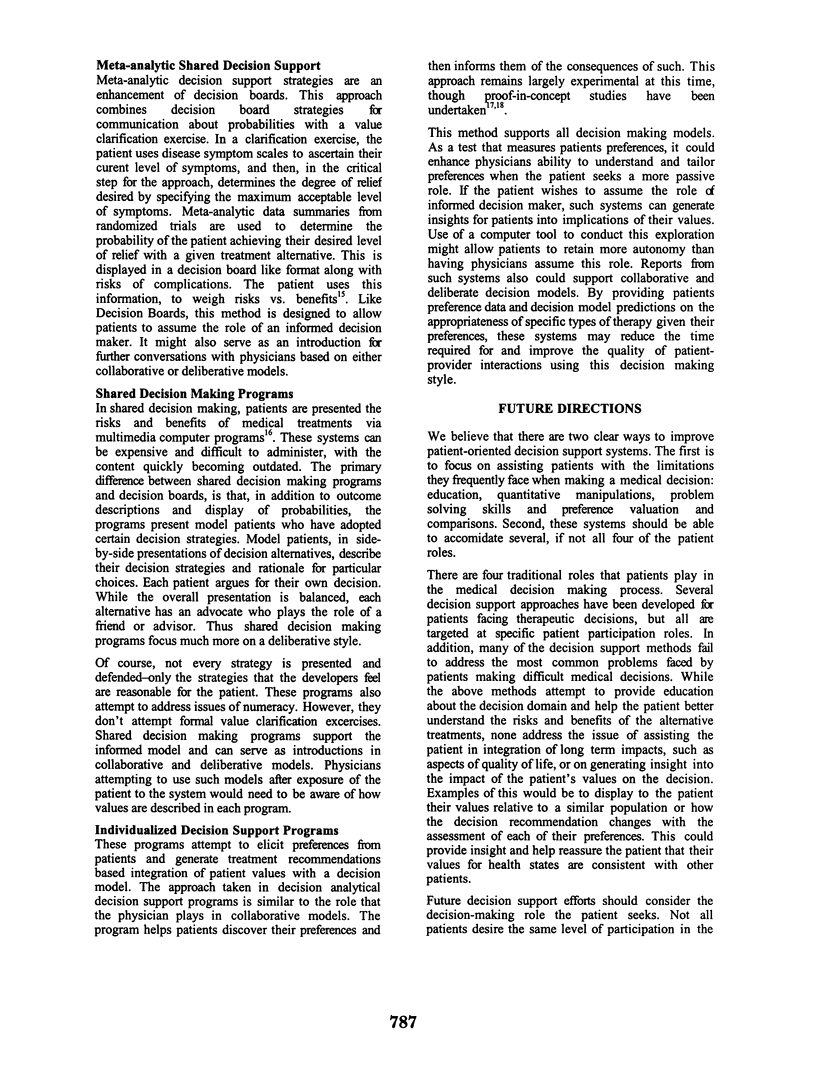
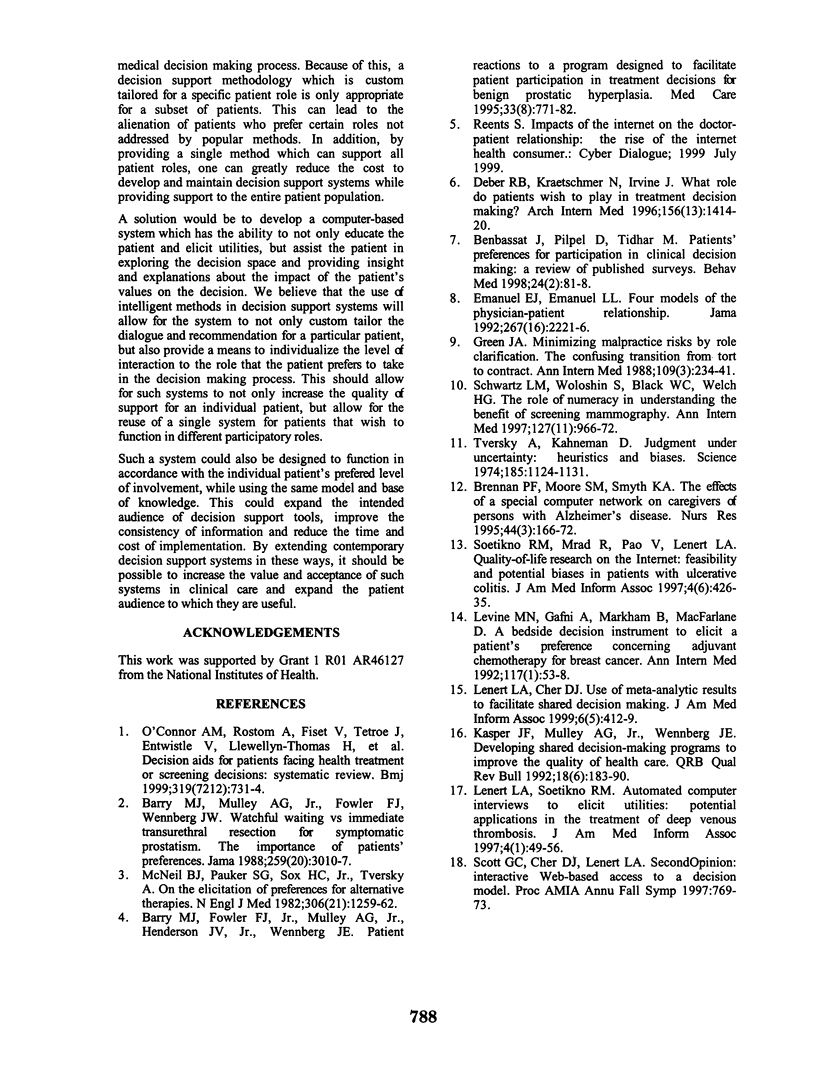
Selected References
These references are in PubMed. This may not be the complete list of references from this article.
- Barry M. J., Fowler F. J., Jr, Mulley A. G., Jr, Henderson J. V., Jr, Wennberg J. E. Patient reactions to a program designed to facilitate patient participation in treatment decisions for benign prostatic hyperplasia. Med Care. 1995 Aug;33(8):771–782. doi: 10.1097/00005650-199508000-00003. [DOI] [PubMed] [Google Scholar]
- Barry M. J., Mulley A. G., Jr, Fowler F. J., Wennberg J. W. Watchful waiting vs immediate transurethral resection for symptomatic prostatism. The importance of patients' preferences. JAMA. 1988 May 27;259(20):3010–3017. [PubMed] [Google Scholar]
- Benbassat J., Pilpel D., Tidhar M. Patients' preferences for participation in clinical decision making: a review of published surveys. Behav Med. 1998 Summer;24(2):81–88. doi: 10.1080/08964289809596384. [DOI] [PubMed] [Google Scholar]
- Brennan P. F., Moore S. M., Smyth K. A. The effects of a special computer network on caregivers of persons with Alzheimer's disease. Nurs Res. 1995 May-Jun;44(3):166–172. [PubMed] [Google Scholar]
- Deber R. B., Kraetschmer N., Irvine J. What role do patients wish to play in treatment decision making? Arch Intern Med. 1996 Jul 8;156(13):1414–1420. [PubMed] [Google Scholar]
- Emanuel E. J., Emanuel L. L. Four models of the physician-patient relationship. JAMA. 1992 Apr 22;267(16):2221–2226. [PubMed] [Google Scholar]
- Green J. A. Minimizing malpractice risks by role clarification. The confusing transition from tort to contract. Ann Intern Med. 1988 Aug 1;109(3):234–241. doi: 10.7326/0003-4819-109-3-234. [DOI] [PubMed] [Google Scholar]
- Kasper J. F., Mulley A. G., Jr, Wennberg J. E. Developing shared decision-making programs to improve the quality of health care. QRB Qual Rev Bull. 1992 Jun;18(6):183–190. doi: 10.1016/s0097-5990(16)30531-0. [DOI] [PubMed] [Google Scholar]
- Lenert L. A., Cher D. J. Use of meta-analytic results to facilitate shared decision making. J Am Med Inform Assoc. 1999 Sep-Oct;6(5):412–419. doi: 10.1136/jamia.1999.0060412. [DOI] [PMC free article] [PubMed] [Google Scholar]
- Lenert L. A., Soetikno R. M. Automated computer interviews to elicit utilities: potential applications in the treatment of deep venous thrombosis. J Am Med Inform Assoc. 1997 Jan-Feb;4(1):49–56. doi: 10.1136/jamia.1997.0040049. [DOI] [PMC free article] [PubMed] [Google Scholar]
- McNeil B. J., Pauker S. G., Sox H. C., Jr, Tversky A. On the elicitation of preferences for alternative therapies. N Engl J Med. 1982 May 27;306(21):1259–1262. doi: 10.1056/NEJM198205273062103. [DOI] [PubMed] [Google Scholar]
- O'Connor A. M., Rostom A., Fiset V., Tetroe J., Entwistle V., Llewellyn-Thomas H., Holmes-Rovner M., Barry M., Jones J. Decision aids for patients facing health treatment or screening decisions: systematic review. BMJ. 1999 Sep 18;319(7212):731–734. doi: 10.1136/bmj.319.7212.731. [DOI] [PMC free article] [PubMed] [Google Scholar]
- Schwartz L. M., Woloshin S., Black W. C., Welch H. G. The role of numeracy in understanding the benefit of screening mammography. Ann Intern Med. 1997 Dec 1;127(11):966–972. doi: 10.7326/0003-4819-127-11-199712010-00003. [DOI] [PubMed] [Google Scholar]
- Scott G. C., Cher D. J., Lenert L. A. SecondOpinion: interactive Web-based access to a decision model. Proc AMIA Annu Fall Symp. 1997:769–773. [PMC free article] [PubMed] [Google Scholar]
- Soetikno R. M., Mrad R., Pao V., Lenert L. A. Quality-of-life research on the Internet: feasibility and potential biases in patients with ulcerative colitis. J Am Med Inform Assoc. 1997 Nov-Dec;4(6):426–435. doi: 10.1136/jamia.1997.0040426. [DOI] [PMC free article] [PubMed] [Google Scholar]
- Tversky A., Kahneman D. Judgment under Uncertainty: Heuristics and Biases. Science. 1974 Sep 27;185(4157):1124–1131. doi: 10.1126/science.185.4157.1124. [DOI] [PubMed] [Google Scholar]


